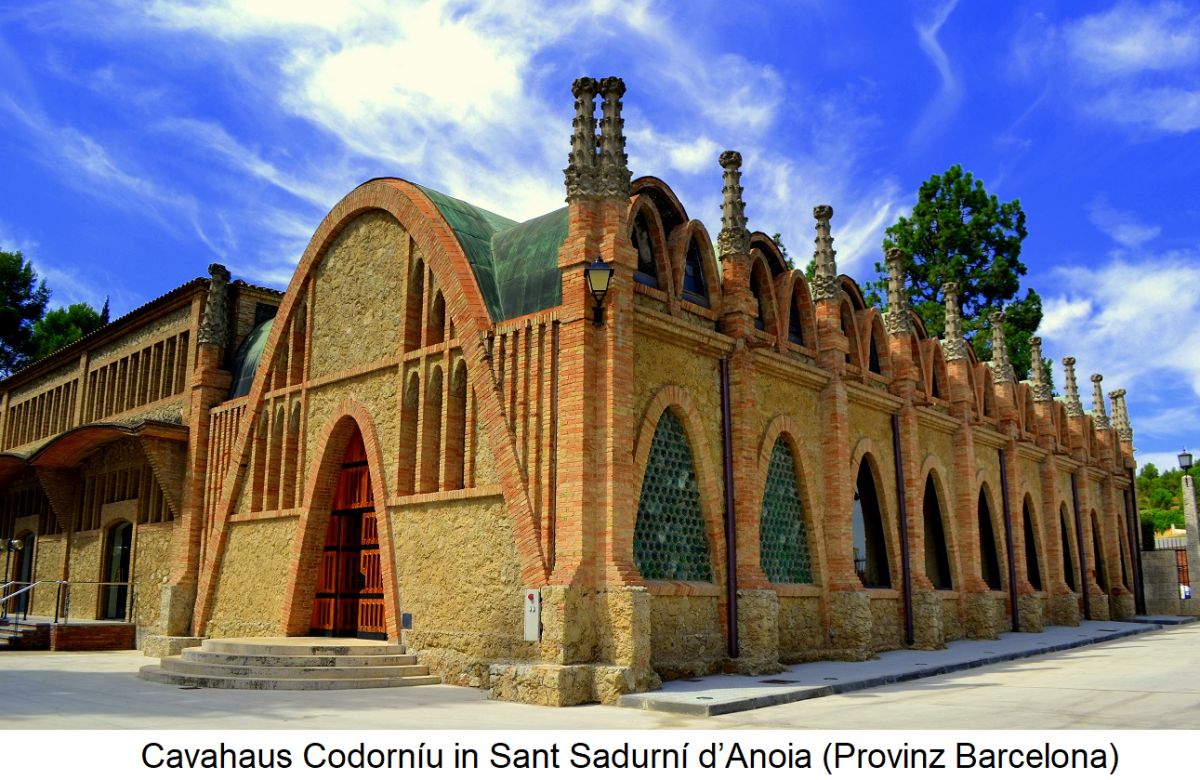Sparkling wine house with headquarters in Sant Sadurní d'Anoia (province of Barcelona) in Spain. It consists of several wineries and cellars with a total of 3,245 hectares of vineyards. The first winery was founded in 1551 by the Codorníu family in the town of Sant Sadurni d'Anoia in what is now the DO Penedès (Catalonia), making it one of the oldest wineries in Spain. In 1659, Maria Anna Codorníu married a Raventós, which is considered the year the company was founded. Anna was the last of the family to bear the name Codorníu. Following a trip to Champagne in the early 1870s, the direct descendant José Raventós produced a sparkling wine using the Champagne method. However, he was not the first producer, as is often wrongly claimed, but was the first to use today's standard grape varieties and, as the head of the company, played a significant role in the triumph of the Spanish sparkling wine Cava.

For a long time, the sparkling wine was known as Xampàn (Champán). His son Manuel Raventós took over the management of the company in 1885. Codorniú's sparkling wine was awarded a gold medal at the Universal Exhibition in Barcelona in 1888. Exports began in 1897, and from this year the royal coat of arms was allowed to appear on the label. The five-storey winery, built in 1915 and listed as a historical monument since 1976, is surrounded by a beautiful park with a 30-kilometre-long labyrinth. The old bodega has been converted into a museum.
The house's standard cava is produced from the three classic varieties Parellada, Macabeo and Xarello. Cavas with a Chardonnay component are also produced, such as "Codorníu 1551", "Anna de Codorníu" and the top reserve "Jaume Codorníu". At the beginning of the 1990s, Codorníu succeeded in having the Chardonnay variety authorised, despite vehement resistance from its major competitor Freixenet. In the 1970s, Codorníu used mechanical remuage (vibrating) of the bottles using a gyropalette for the first time. In 2001, the company celebrated 450 years of history. The Spanish King Juan Carlos I (born 1938) visited the Codorníu winery and signed the label of the bottle, which was given the name "Gran CAVIT Primato" and holds 26 litres. With almost 100 million bottles a year, the company is the second largest cava producer after Freixenet. However, it also produces large quantities of still wines.
Numerous other companies belong to the company. The famous Raïmat winery was founded by Manuel Raventós back in 1914. The company also owns the Masía Bach and Rondel wineries in the Penedès region, the Bilbaínas winery in the Rioja Alta region and its own viticultural research centre. In 1992, the Codorníu Napa winery was opened in Los Carneros in California, where sparkling wines are produced.
Image: By Angela Llop - Flickr, Codorniu, CC BY-SA 2.0, Link
Voices of our members

There is a vast number of sources on the web where one can acquire knowledge about wine. But none has the scope, timeliness and accuracy of the information in the encyclopaedia at wein.plus. I use it regularly and rely on it.
Sigi Hiss
freier Autor und Weinberater (Fine, Vinum u.a.), Bad Krozingen